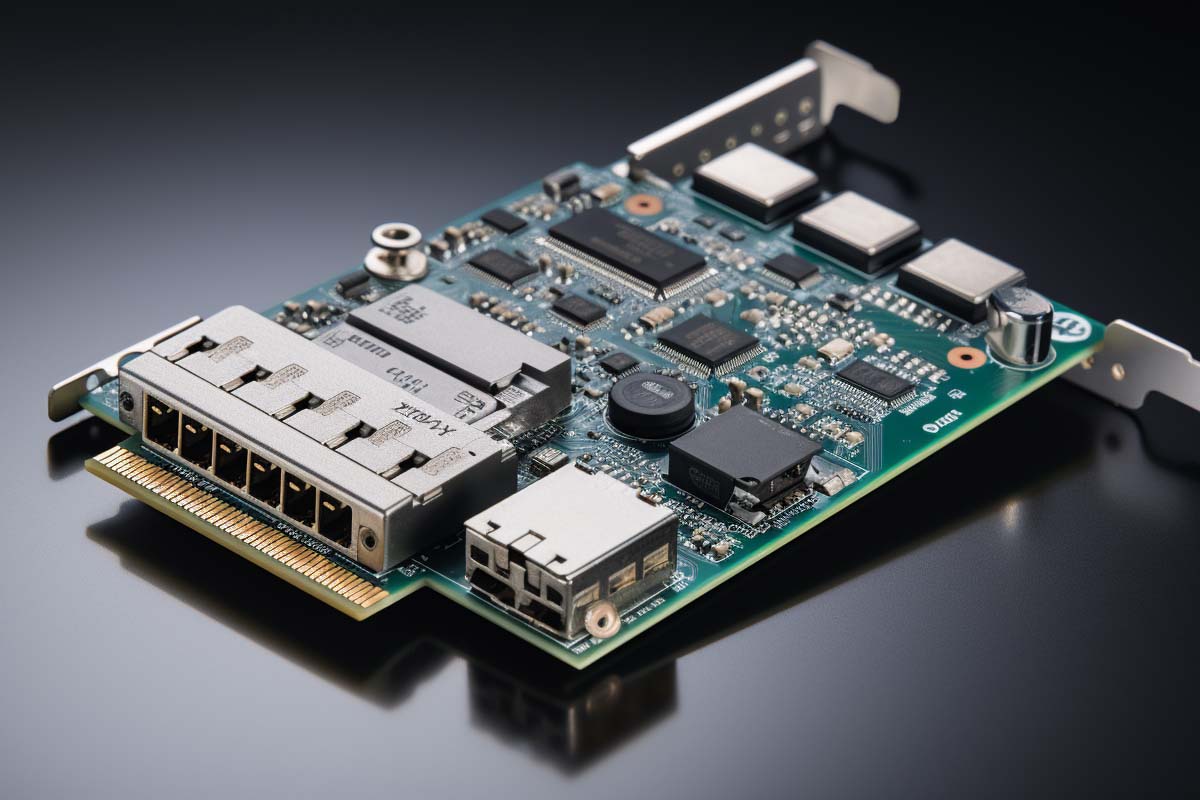What Is Access Control List (ACL)
An Access Control List (ACL) is a crucial security concept in computer networks and systems. It specifies which users or system processes are granted access to objects, as well as

Let’s explore network hardware devices! This chapter promises to be an enlightening journey through the devices essential for creating and maintaining a local area network (LAN) infrastructure. Here, we delve into the world of networking hardware – the backbone that enables computers to communicate over various network media like Ethernet, fiber, and more.
We begin by acknowledging the hub, a now-obsolete device in the realm of networking hardware. Hubs, once a staple, have been replaced by more efficient and advanced equipment. This shift signifies the rapid evolution of networking technology and the need for up-to-date knowledge in the field.
This comprehensive training series is designed to provide both new and experienced network administrators with a robust skillset enabling you to manager current and networks of the future.
The network adapter, often referred to as the network interface card (NIC), is a pivotal component in the realm of networking. Its role extends beyond mere connectivity; it serves as the primary interface between the computer and the network, whether it’s a local area network (LAN) or the broader internet. Let’s delve deeper into the intricacies and significance of network adapters.

Targeting Cisco specific Networks, this Cisco Network Engineer Training series provides in-depth curriculum for those wanting to learn networking basics and advance his/her career opportunities as a Cisco Network Engineer.
Network adapters are more than just a bridge between a computer and a network; they are sophisticated devices that manage data transmission, ensure connectivity, and provide security. Their evolution continues to be driven by the demands for higher speeds, better security, and greater efficiency in network communication. Understanding the capabilities and features of network adapters is crucial for anyone involved in network design, administration, or troubleshooting.

Your career in information technology last for years. Technology changes rapidly. An ITU Online IT Training subscription offers you flexible and affordable IT training. With our IT training at your fingertips, your career opportunities are never ending as you grow your skills.
Plus, start today and get 30 days for only $1.00 with no obligation. Cancel anytime.
The LED (Light Emitting Diode) indicators on network adapters are more than just simple lights; they are an invaluable tool for diagnosing and monitoring the status of network connectivity. Each LED on a network adapter serves a specific purpose, offering insights into the operational state of the network connection. Let’s explore these LED statuses in more detail.
Some network adapters, especially those in enterprise environments, may have additional LEDs for more specific functions:
Understanding what each LED indicator represents can be crucial in troubleshooting network issues. For example:
It’s important to note that LED behavior can vary between different manufacturers and models of network adapters. Therefore, consulting the specific documentation for your network adapter is recommended for accurate interpretation of LED statuses.
Regularly observing the LED indicators on your network adapters can help quickly identify common issues like cable problems, speed mismatches, or network congestion. It’s a simple yet effective method to ensure that your network connection is functioning optimally.
The LED statuses on network adapters offer a quick and easy way to monitor network health and diagnose issues. By understanding what each LED indicates, users and network administrators can effectively manage and troubleshoot their network connections, ensuring reliable and efficient network operations.
As we conclude this chapter, it’s evident that understanding network hardware is crucial for anyone involved in managing or setting up LANs. The shift from legacy devices like hubs to advanced equipment like switches and NICs highlights the dynamic nature of network technology. Stay tuned for more insights as we continue to explore the fascinating world of networking!
Understanding the key terms related to network hardware devices is crucial for anyone working in IT, networking, or related fields. These terms form the backbone of knowledge required to effectively understand, set up, and manage network infrastructures. Familiarity with these concepts not only aids in technical comprehension but also enhances the ability to troubleshoot, optimize, and secure network environments.
| Term | Definition |
|---|---|
| Network Interface Card (NIC) | A hardware component that allows a computer to connect to a network, supporting mediums like Ethernet, Wi-Fi, and fiber optic connections. |
| Network Adapter | A device providing the physical interface for network connectivity, handling data transmission over networks. |
| RJ45 | A standard type of connector used for Ethernet networking, typically seen on wired network cards. |
| IEEE 802.11 | A set of standards defining wireless network (Wi-Fi) communications. |
| PCI Expansion Slot | A slot on a computer motherboard allowing additional cards (like Wi-Fi cards) to be added for expanded functionality. |
| Ethernet | A common method of networking computers in a LAN using specific protocols and cables. |
| Wi-Fi | A wireless networking technology allowing devices to connect to the Internet and each other without cables. |
| Fiber Optic Connections | Network connections using optical fibers to transmit data at high speeds over long distances. |
| Multiband Operation | The ability of wireless network adapters to operate on multiple frequency bands. |
| Dual or Multi-Port Network Adapters | Network adapters with multiple ports for handling several network connections simultaneously. |
| Quality of Service (QoS) | Network feature allowing prioritization of specific types of network traffic to ensure critical applications receive necessary bandwidth. |
| LED Indicators | Lights on network adapters providing visual feedback on connection status, activity, and speed. |
| MAC Address | A unique identifier assigned to network interfaces for communications on the physical network segment. |
| PoE (Power over Ethernet) | A technology allowing network cables to carry electrical power along with data. |
| Full-Duplex | A communication system where both ends can transmit and receive data simultaneously. |
| Half-Duplex | A system where communication can occur in both directions, but not simultaneously. |
| Switch | A networking device connecting devices together on a computer network by using packet switching to receive and forward data. |
| Hub | An obsolete network device used to connect multiple Ethernet devices, making them act as a single network segment. |
| Bridge | A device used to connect multiple network segments, operating at the data link layer. |
| Repeater | A network device used to regenerate or replicate a signal as it weakens over distance or due to obstruction. |
This list represents a foundational understanding of network hardware devices, essential for professionals in IT and network management.
A Network Interface Card (NIC) is a hardware component that allows a computer or device to connect to a network. It can be integrated into the motherboard or installed as an expansion card. NICs are essential for establishing a network connection, whether it’s for accessing the internet or for communicating within a local area network (LAN).
While most network adapters are designed to support either wired or wireless connections, there are some multi-function adapters that can handle both. These adapters typically have both an Ethernet port and wireless capabilities, allowing flexibility in how a device connects to different types of networks.
The LED lights on a network adapter provide visual cues about the network status. Common indicators include a link status LED showing the connection presence, an activity LED indicating data transmission, and a speed LED displaying the connection speed. Understanding these lights can help diagnose connectivity issues.
If the link light on your network adapter is not turning on, it could be due to several reasons such as a disconnected or faulty network cable, a problem with the router or switch port, or an issue with the network adapter itself. Checking the cable connections, trying a different port, and testing with a different cable are good first steps for troubleshooting.
The choice between a wired and wireless network adapter depends on your specific needs and environment. Wired connections, typically through Ethernet, offer faster speeds and more stability, making them ideal for stationary devices that require high bandwidth. Wireless connections provide the convenience of mobility and are perfect for devices that need to move around, like laptops and smartphones. In environments with a lot of interference or where running cables is impractical, wireless is often the preferred choice.
Lorem ipsum dolor sit amet, consectetur adipiscing elit. Ut elit tellus, luctus nec ullamcorper mattis, pulvinar dapibus leo.
$49.99 Original price was: $49.99.$16.99Current price is: $16.99. / month with a 10-day free trial
An Access Control List (ACL) is a crucial security concept in computer networks and systems. It specifies which users or system processes are granted access to objects, as well as
Active Directory Federation Services (ADFS) is a software component developed by Microsoft that provides users with single sign-on (SSO) access to systems and applications located across organizational boundaries. ADFS is
Adaptive Security Architecture refers to a strategic framework designed to provide a dynamic, context-aware approach to cybersecurity. This architecture enables organizations to anticipate, prevent, respond, and adapt to emerging threats
Addressable TV advertising is a method of delivering targeted advertisements based on household or individual viewer profiles, leveraging data analytics to serve different ads to different audience segments watching the
The Advanced RISC Machine (ARM) architecture, known for its power efficiency and performance, is a computer processor architecture that has significantly impacted the digital world. Primarily used in mobile devices,
Agile Portfolio Planning is a strategic approach focused on aligning project, program, and portfolio management processes with agile methodologies. It’s aimed at enhancing flexibility, transparency, and the ability to respond
Agile Software Development is a methodology used for developing software that emphasizes flexibility, customer participation, and the iterative delivery of software. This approach to software development is designed to adapt
Artificial Intelligence (AI) accelerators are specialized hardware or software designed to significantly speed up AI applications, including deep learning, machine learning, and neural networks. These accelerators optimize computational processes to
Algorithm analysis is a critical area of computer science that focuses on evaluating the efficiency and effectiveness of algorithms. This analysis assesses not just the correctness of an algorithm but
Algorithmic trading, often referred to as algo-trading, is a method of executing orders using automated pre-programmed trading instructions accounting for variables such as time, price, and volume. This type of
An Analog-to-Digital Converter (ADC) is a crucial component in modern electronics, bridging the gap between the analog world of natural phenomena and the digital realm of computing and digital signal
In the world of digital communication, a datagram plays a crucial role. It’s a unit of data that’s transmitted across a network without prior arrangement or setup between the sending
ENDING THIS WEEKEND: Train for LIFE at our lowest price. Buy once and never have to pay for IT Training Again.

Get ready for the updated 220-1201 & 220-1202 exams with our brand-new CompTIA A+ training—designed to help you pass with confidence and start your IT career strong. Access this course and over 2,000 hours of expert-led IT training when you sign up for any of our All-Access Passes. Don’t miss out—enroll now and start learning today!